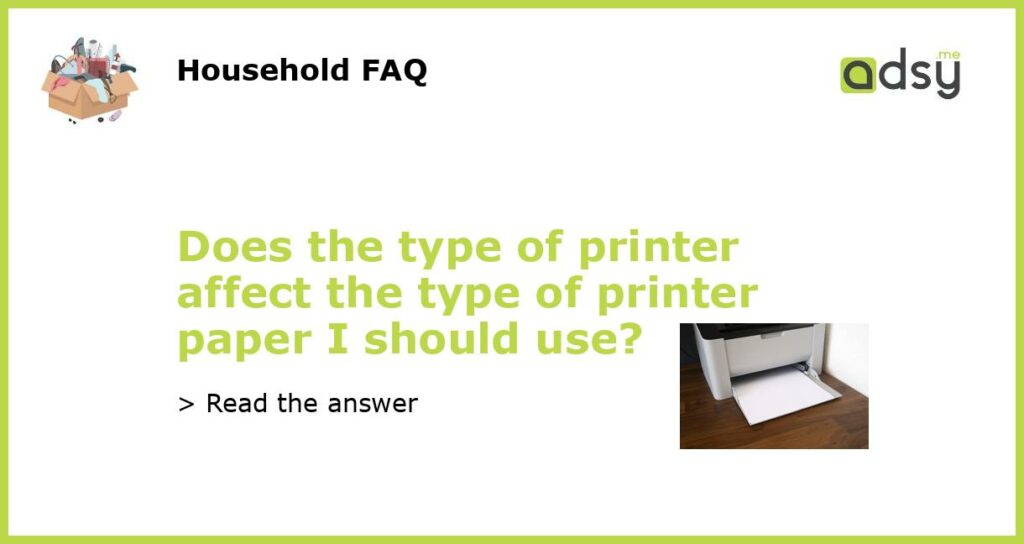Yes, the type of printer does affect the type of printer paper you should use
When it comes to selecting printer paper, it’s important to consider the type of printer you are using. Different types of printers have different requirements and using the incorrect paper can lead to poor print quality, paper jams, and other printing issues.
Laser printers require a different type of paper than inkjet printers
One of the main factors that determine the type of paper you should use is whether you are using a laser printer or an inkjet printer. Laser printers use a completely different printing technology than inkjet printers, which means they require different types of paper. While inkjet printers use liquid ink that is sprayed onto the paper, laser printers use toner, a powdered substance that is fused onto the paper using heat and pressure.
Inkjet printers are more versatile when it comes to paper options
In general, inkjet printers are more versatile when it comes to paper options. They can handle a wide range of paper types, including glossy, matte, and textured papers. This gives you the flexibility to choose the type of paper that best suits your needs, whether you are printing photos, documents, or other materials.
However, it’s still important to consider the specific recommendations provided by the printer manufacturer. They may have specific paper recommendations based on the model and specifications of your inkjet printer. It’s always a good idea to consult the printer manual or visit the manufacturer’s website for more information.
Laser printers require special paper that can withstand the heat and pressure
Laser printers, on the other hand, require a special type of paper that can withstand the high heat and pressure used to fuse toner onto the paper. This type of paper is usually referred to as laser paper or laserjet paper. It is designed to have a higher heat tolerance and smoother surface than regular paper, which helps to enhance print quality and prevent paper jams.
Using the wrong type of paper in a laser printer can cause the toner to smudge, the paper to warp, or the printer to jam. It can also lead to poor print quality and reduced durability of printed materials. Laser printer manufacturers often provide specific recommendations for compatible paper types, so it’s important to follow their guidelines to ensure optimal performance.
Consider the purpose and quality requirements of your printed materials
In addition to the type of printer you are using, it’s also important to consider the purpose and quality requirements of your printed materials. For example, if you are printing professional documents or marketing materials, you may want to use a higher-quality paper that enhances the appearance and durability of your prints.
On the other hand, if you are printing everyday documents or drafts, a standard printer paper may be sufficient. It’s also worth considering factors such as paper weight, brightness, and opacity, as these can all impact the final print quality and appearance.
In conclusion, the type of printer you are using does affect the type of printer paper you should use. Laser printers require a special type of paper that can withstand the heat and pressure used during the printing process. Inkjet printers are more versatile and can handle a wider range of paper types. It’s important to consult the printer manual or manufacturer’s recommendations for specific paper requirements to ensure optimal print quality and performance.






